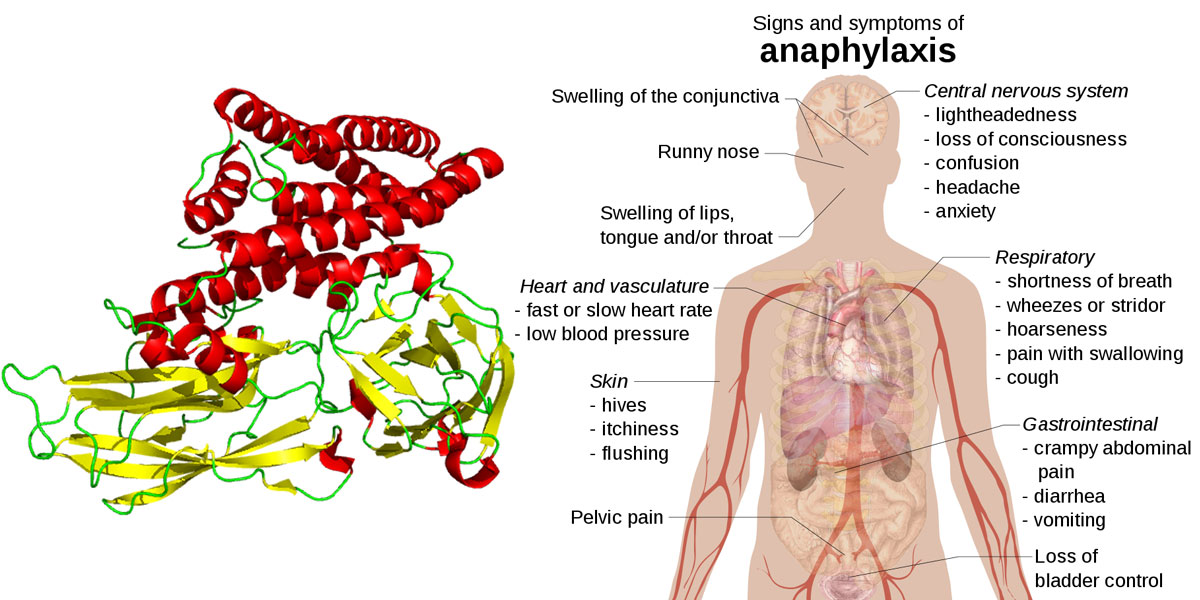
Question follows study in mice showing the GM Bt toxin Cry1Ac is immunogenic, allergenic, and able to induce anaphylaxis
The European Food Safety Authority (EFSA) has been asked to look again at whether GMOs containing the Cry1Ac toxin could cause food allergies and even anaphylaxis (a severe allergic response that can result in suffocation), according to a report in EU Food Policy.[1] Cry1Ac is an insecticidal toxin expressed in GM Bt crops eaten by humans and animals.
EU Food Policy said that Sabine Juelicher, director of the EU Commission's food safety unit DG SANTE, has asked the Authority to examine urgently a new study by K.I. Santos-Vigil and colleagues carried out in Mexico which has been published in the International Immunopharmacology Journal. She wants the assessment by 9 November.
GMWatch reported in August this year on the study, which was performed in mice. The study found that the GM Bt toxin Cry1Ac is immunogenic, allergenic, and able to induce anaphylaxis. The responses that Cry1Ac was found to produce in the mice included "mildly allergic manifestations” around the mouth, nose and ears, as well as wheezing, hair standing on end, and diarrhea.
The study also found that Cry1Ac provoked intestinal lymphoid hyperplasia, a condition marked by an increase in the number of cells contained in lymph nodes. The condition is associated with food allergy, inflammatory bowel disease, and colon cancer.
Ms Juelicher asked EFSA whether the study contains elements that could lead the GMO panel to reconsider its previous opinions on GM crops containing Cry1Ac.
A number of GMOs previously assessed by EFSA contain Cry1Ac, including Dow's GM soybean DAS 81419-2, some GM cottons, and the Monsanto GM soybean MON87701 x MON89788.
Minority Opinions draw attention to risks of GMOs
The question of GMO allergens was highlighted in two minority EFSA Opinions by a former member of its GMO panel, Jean-Michel Wal, who is an allergy specialist.
One of Dr Wal's minority Opinions was on a Syngenta stacked-trait maize containing several Bt toxins and herbicide-resistance genes. Dr Wal was critical of the situation in which the applicant was seeking approval not only for the named stacked-trait maize but also for possible future maize varieties formed of "sub-combinations" of traits contained in the original maize – yet it provided no safety data for these sub-combinations.
Dr Wal warned of "uncontrolled risk for the health of human consumers in certain segments of the population" from eating such maize varieties. He stated that EFSA's Opinion that these "sub-combination" maize varieties would be safe was "based on assumptions that are not fully clarified and justified".
Dr Wal criticised EFSA for acting outside its remit in attempting to fill in the gaps left by the missing data with "arguments". He said, "The role and remit of EFSA experts should be limited to check the validity and relevance of the data provided and the reliability of the outcomes of the safety assessment performed by the Applicant and not to develop arguments that could replace the missing data instead of the Applicant."
In light of EFSA's history of championing the interests of the GMO industry rather than those of the public, it would be surprising if the authority now admitted that GMOs containing the Cry1Ac toxin posed any risk. Yet if it is true to the science, that is exactly what it must do.
Notes
1. EU Food Policy (2018). GMOs: Commission asks for urgent assessment of allergies. 19 Oct. Subscription only; no direct link. http://www.eufoodpolicy.com










